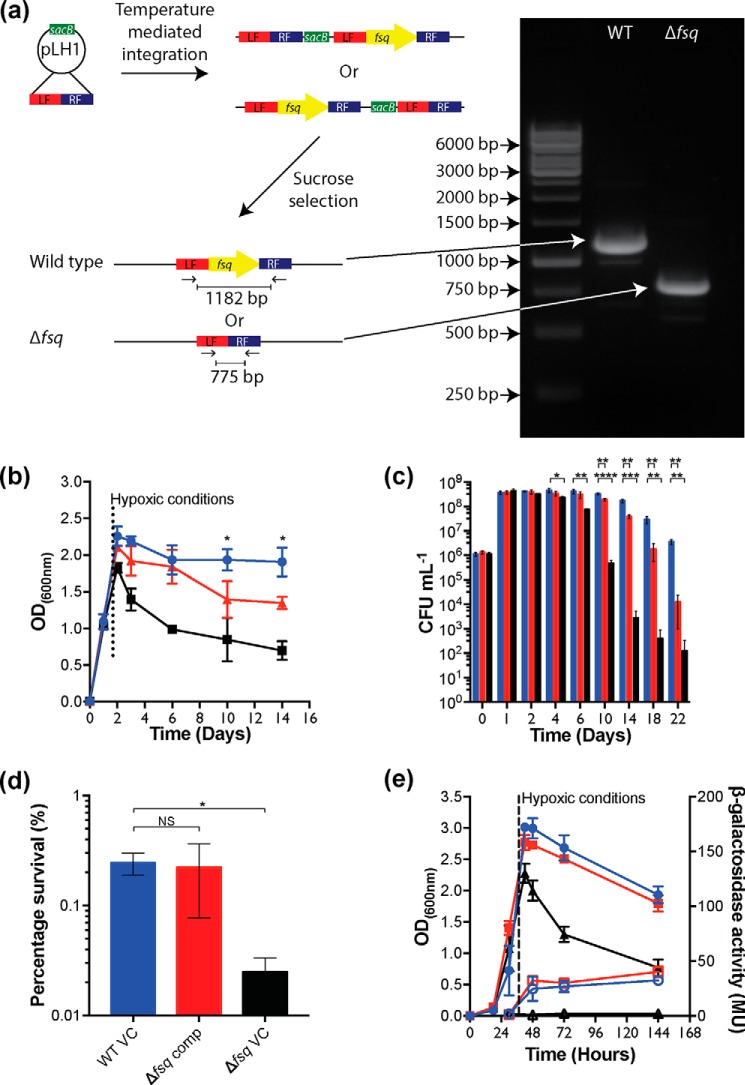Figure 2.
Creation and hypoxic survival of Δfsq markerless deletion mutant. a, diagram of fsq markerless deletion construction. b and c, long-term survival of M. smegmatis WT (blue) compared with ΔdosR (black) and Δfsq (red) mutants under hypoxic conditions. Growth was in HdB minimal medium supplemented with 22 mm glycerol. Entry of the vials into a hypoxic state was estimated by the decolorization of methylene blue (1.5 μg/ml) which occurred at 27 h. b, growth measured using optical density at 600 nm wavelength with an average of three biological replicates shown with error bars representing S.D. Unpaired Student's t test of WT compared with Δfsq. *, p < 0.05 at each time point. c, survival measured using colony-forming units (CFU) with an average of three biological replicates shown with error bars representing S.D. Unpaired Student's t test of WT compared with Δfsq and WT compared with ΔdosR at each time point. *, p < 0.05; **, p < 0.01; ***, p < 0.001; ****, p < 0.0001. d, complementation of survival defect of Δfsq mutant using pLH2 (fsq+) (Δfsq comp) (red) compared with an empty vector control in wild type (WT VC) (blue) and an empty vector in Δfsq mutant (Δfsq VC) (black). Vectors were induced using 20 ng/ml tetracycline just prior to entry into hypoxia. Survival percentage of day 18 with an average of three biological replicates shown with error bars representing S.D. Unpaired Student's t test of WT compared with Δfsq comp and WT compared with Δfsq VC. *, p < 0.05. e, measurement of DosR activity through hyd3 LacZ expression in M. smegmatis WT compared with ΔdosR and Δfsq mutants under hypoxic conditions. Strains were grown into hypoxia in HdB with 22 mm glycerol. Entry into hypoxia was indicated by methylene blue (1.5 μg/ml) control vials. Samples (2 ml) were taken at 27, 48, 72, and 144 h and used to preform β-gal assays to assess the level of dosR activity. Key: WT, blue circles; ΔdosR mutant, black triangles; Δfsq mutant, red squares; β-gal activity, open symbols; optical density (600 nm), closed symbols. Each sample shows average of a biological triplicate with error bars representing S.D.

